Each gardener can create a real masterpiece from various colors and a palette of flowers and ornamental plants. Many prefer constantly acquire the most popular innovations in flower growing or prefer some exotic varieties and varieties of colors that are later needed. But among all the variety of colors and plants, you can allocate representatives with a beautiful appearance and completely simple departure that will become the perfect addition of any landscape design.
It is to such a flower of a variety of flowers - a herbaceous plant with very gentle flowers that form a real lush cloud during flowering. Vasilstennik, landing and care in the open soil for which they will not make care even for an inexperienced gardener, is a familiar plant for the wildlife of Russia.
In this article, consider the peculiarities of cultivation of the Vasilisnik plant, we present the characteristics of the most popular species and varieties of this culture, as well as notice the important moments of planting and flower care.
Features and description of cornistid
Vasilistnik is a perennial herbaceous plant, which is characterized by decorative appearance and flowering. Almost 150 representatives of this plant belong to the Family Family. The natural area of \u200b\u200bhabitat of this type of plants is the territory with a temperate climate in the northern hemisphere, the mountainous terrain of America and the southern part of Africa. These are seemingly simple flowers can be found throughout Europe and Asia, many different types of cornisters are growing in Russia. In the wild, these herbaceous plants prefer to grow on the edges of the forests, where many sunlight, along the shores and in the meadows.
The Vasil's Plant was previously very popular in Europe. It could be found in the gardens of noble people and in the parks, about the peculiarities of his cultivation was written in old horticultural books. These flowers fell in love and people who lived in the Victorian Epoch. However, then the calm came and the plants were almost forgotten. Literally recently, the interest in the cornister has grown again, as natural landscape designs have entered the fashion using fairly simple plants with a cute and gentle appearance.
The very name itself has an ancient Greek origin. It happened from the words "Thalos", which in translation denotes the "green branch", and "ICTER", a denoting "begging". Literally can be translated as a branch asking for help. In its appearance, the branches of the Vasilistnik are very similar to the branches of the Maslina, which is a sign of requests for protection. Many bind the origin of the name with the name of the mythical being Vasilisk. The meaning of the name of the Vasilistnik and with the name of the medicine, which in the days of Ancient Russia treated warriors. The name of her Vasilisa, but over time, the confusion of letters occurred in the Word and the plant was obtained. This origin is associated with the fact that the cornister is a medicinal plant, which is widely used in folk medicine.
Vasilistnik's description:
- Vasilisnik is a herbaceous plant for open soil, which belongs to the group of perennials and is characterized by decorative flowering.
- Root plant plant is very large and branched. It is also called creepy, as the roots are able to quickly grow and penetrate over long distances underground.
- Stems from Vasilistnik, a reprehension and very high. On average, the height of one plant can reach 50-200 cm.
- The stem is most often a leafless, less often there are varieties with a small number of leaves that grow on the stems.
- The leaves of the cornistidate are assembled into the root rosette, are a peristo-separated shape, very beautiful and openwork.
- The sheet plate from the top side is shiny, and the bottom has a slight omission or fall.
- The flowering of this herbaceous perennial begins in approximately June-July, it all depends on the specific type and variety of cornistid. Blossoms about 3-4 weeks.
- Flowers who have a rather unusual structure are specially decorative. At first glance it seems that the flower consists of simple petals and a large number of stamens. But in fact, the petals in the colors of the cornistidant are not at all, these are ordinary strips that can be painted in pink or yellowish shades. After a complete dissolution of the buds of the cups fall and remain alone stamens that make a flower like a lush ball.
- Flowers themselves are not very attractive, however, they create beautiful inflorescences of different shapes: sweatshirt, palate or creeps.
- Color painting is also different. There are varieties with white, red, yellow, pink, purple flowers.
- When the cornister blooms, it seems that all the plant is covered with a soft and fluffy pink, purple, burgundy or white cloud of flowers.
- Plant flowers have a pleasant fragrant fragrance, which attracts bees and other insects.
- After a bunch of inflorescences on the plant begins to ripen the fruit represented by a multi-sized. The fruit can be seated or attached on the leg, inside it is seeds.
- Vasilisnik seeds are quite large and oblong.
- Vasilistnik is popular in landscape design, and also used for cutting. Flowers are plants can be dried, after which it is used to design bouquets.
Variety of types and varieties of cornistidate, their characteristics
Today in nature there are approximately 150 different types of cornisters, which in varying degrees were popular among the gardeners and have different features of the appearance and a tinge of inflorescence. Let us give a description of the most common species in Russia and varieties of this plant.
- Vasilnikovnik Waterboarding. This is one of the most common types of cornistid, which has a very decorative appearance. In nature grows in deciduous and mixed forests of Europe. Vasilnikovnik Water harvesting is distinguished by a compact shape and medium sizes, in height can reach approximately 1.2-1.5 m. Decorative value are beautiful leaves and flowers. Leaves of openwork, peristo-separated shape, SIZAL Tint. The leaves are growing from the root area. It is because of the form of foliage, the species called the catchment, since the sheet plate resembles a leaf of the catchment. Blooming the plant begins in June and lasts about 2 months. On cornisters, small flowers are blooming on a white or pale lilac, which are collected in loose bulbous inflorescences of a rounded shape. There are many varieties of this type of vassing: Album variety - with white flowers up to 90 cm high, thundercloud variety - colors of a saturated purple tint up to 75 cm, DWARF PURPLE variety - a low-speed plant up to 45 cm with pink inflorescences.
- Vasilitnik doing. The natural habitat of this type of cornistid is the territory of China. It is a herby perennial plant, which can be in height 120-150 cm. Plant leaves are quite large, openwork, dark green. Blossom starts approximately in July and lasts until August. Flowers of the terry shape of a lilac-lilac or pink shade, which are assembled into lush buggy inflorescences, diameter up to 15 cm. An adult plant can have a flowering cap to 1 m in diameter. There are popular varieties: Hewlett's Double - with terry lilac flowers with a height of 1 m.
- Vasilniktnik nitrate. The natural area of \u200b\u200bhabitat is the territory of the Far East. It is a low-length long-term grassy flower, which can be in height to reach 15-25 cm. Burnt leaves of light green color, beautiful peristo-separated shape. Blossom starts in mid-May and lasts for 3 weeks. Flowers small white shade, collected in beautiful openwork inflorescences. He is a long-liver, in one place can grow about 20 years. This species is ideal for planting under the trees that form a beautiful impossible cover.
- Vasilniste yellow. The natural habitat is the moderate climate of Eurasia. It is a perennial plant with a reprehensive furillast stem, which in height can reach 60-150 cm. The stem is a bit covered with leaves, the leaves also grow in the root area of \u200b\u200bthe plant. Leaves beautiful acutely gear and back-visual leaves of a gray-green shade. Flowers of yellow colors are collected in beautiful thyroid-blurred inflorescences of a yellow shade with a pleasant aroma. Blossom begins in June and lasts for two months.
- Vasilniknik small. It is a perennial, uniformly refined plant with a reprehensive or slightly bent stems up to 80-100 cm high. The stems are covered with different in the form of leaves that are minced in the upward direction. From above on the stem, inversely-shaped leaves are growing, then they are peristo-separated, and the roots are tremendous. The flowers for this species are rather unbroken and understated, form a loose greenish-yellow tint loose bulky scenery. Blossom begins in June and lasts for two months.
- Vasilistnik Anemoneovoid. Natural habitat is the eastern territory of North America. This is a perennial long-range plant, which looks like anemone. Because of this, this type of cornistant is called Anemonella Vasilisnikov. In height, the plant can reach about 15 cm, stems upright and naked, sometimes reddish. The leaves at the plant slightly curved three-dollar, dark green shade, resemble the leaves of the anemone. Blossom starts in April and lasts about a month. Flowers are small, white or pink-white, everyone grows on its separate stalk.
- Vassilniknik Rokhlebrunsky. It is considered a rather rare type of cornistid, which belongs to the garden forms of the plant. Differently distinguished by beautiful reddish shoots with evenly located sisovato-green leaves. The height can reach 2 m. Blossom begins in August, the flowers are a beautiful purple shade, which bloom in the form of fares, which resemble fairy fairy. The natural habitat is the territory of Japan.
Vassing reproduction: Description of common ways
An unpretentious cornister plant can be made without problems independently at home. To do this, it is necessary to clearly imagine all possible methods of breeding and know their main features and nuances. Vasilitnik can be multiplied by several methods: seeds, dividing bush, stalling. Each option can be even a novice gardener, but it is important to know a clear sequence of events.
Seed breeding of cornistidal
- This is a rather time-consuming method of breeding a vassalist, which implies the cost of a large number of time and work. In addition, with such reproduction, the plant will not inherit decorative maternal signs.
- First of all, you need to independently assemble seeds, as they need to search them only fresh. To do this, in the middle of the summer, several inflorescences need to be tied up with gauze, so that during the ripening of seeds they do not scatter.
- After harvesting the landing material, they are important to carefully dry.
- Seed seeds can be directly in open ground under the winter or in the spring.
- If you decide to sow seeds in the spring after the soil warming, then it is necessary to conduct a stratification process. For this, the seeds are placed in the refrigerator for about a couple of months.
- Next, you can prepare containers with soil mixture. Alternatively, you can soak seeds into the ground.
- After the appearance of seedlings, it is necessary to germinate, and on a permanent place, young Vasilistnik's young plants are transplanted in a year.
- The flowering of this plant occurs for the second year after landing.
Pencornia varnisal breeding
- This method of breeding is more acceptable for self-breeding of the cornistid, as it requires less costs and allows you to maintain all the varieties.
- The best time for such reproduction is spring.
- For drawing, it is necessary to prepare the planting material, which make it necessary correctly. In the quality of the cuttings, shoots or rhizome, at least with one intersess and heel, so the cuttings are better to tear off, and not cut off. If all the same decided to cut the planting material, then it is important to take a disinfected knife.
- Next, all the cuttings are important to put in a container with a growth stimulator solution, since you facilitate the plant rooting.
- The cuttings are rooted into a light nutrient soil that can be dial in boxes. It is allowed to plant the planting material in an open ground in a quiet place.
- From above, each cutlets must be needed to cover with a plastic bottle or package, you can make a common shelter with a film or glass.
- Daily landing need to water and ventilate.
- Somewhere at the end of the summer, the cuttings are quite fixed and rooted, so they can be planted in an open ground.
- In the first time, young seedlings are advised to protect against direct sunlight. To do this, it is best to build some kind of canopy or plant a landing material on the shaded plot.
Breeding cornisters dividing bush
- This is another way of vegetative reproduction of cornisters who will not deliver visible troubles.
- The propagation of the division of the bush is considered among the gardeners the most popular and frequently used.
- Conduct the division of the bush of cornistidate is recommended at the very beginning of spring until the start of active vegetation.
- To do this, an adult and healthy cornister bush needs to be carefully digging up and a little shaky with the roots.
- After that, a sharp knife or a secateur, the root system is divided into the required number of parts in such a way that each decene has 1-3 kidney growth and healthy roots.
- The obtained deteen are immediately planted into the prepared ground, after which they are abundant.
- Young plants are important to regularly water and loosen the soil to ensure the inflow of oxygen to the roots.
Preparation before planting cornisters
In all its characteristics, the Vasilistnik is considered an unpretentious plant with a large number of positive qualities. Virtually without demanding additional work on cultivation, the cornister will delight you with beautiful and unusual blossoms. The main thing is to properly prepare for the landing of this plant in compliance with all the requirements. It is important to purchase high-quality planting material and find on its plot the most suitable landing place, after that you will only have to plant a seedling and watch it full-fledged development and rapid growth.
Stage 1. Selection of varieties and variety seedlings
- First of all, it is necessary to disturb with the choice of a suitable variety of cornistid. To date, there are a large number of them. Above are just some of them. It is necessary to buy only the zoned varieties that have passed successful adaptation in climate conditions in your region.
- Vasilisnik's variety is also selected based on its decorative qualities, as well as its height. Before you need to decide on the future garden composition, and then go buy the variety of varieties of vassal.
- You can purchase in specialized garden centers, nurseries or agrofirms seedlings, seedlings or vassal seeds. Select the form of planting material from your personal preferences. Seeds require more time and effort, it is best to buy rapid seedlings.
- Before buying, it is important to carefully check the planting material. He must have a healthy appearance, strong shoots and elastic roots. There should be no signs of diseases or traces of pests.
- It is not necessary to acquire corporate saplings from roads or spontaneous markets, since you will not get any warranty in what you pay for money.
Stage 2. Selecting a place to land a varnish
- The choice of the right place to plant the cornistid will be the key to getting a beautiful and magnificent flowering plants.
- It is important to thoroughly make a selection of a plot, as the cornister grows in one place for almost 10 years and does not like transplant.
- It is necessary to take into account the natural preferences of this plant, all in the wild, it grows on the solar edges and on the banks of the rivers. Therefore, on its site, pick a bright place, but not the very sun, since in this case the stems of the cornister will be very pulled out and demand frequent irrigations.
- It is better to choose a place with a slight shading, for example, under the trees or on the shore of an artificial reservoir or pond.
- Also, it is not necessary to choose a place near other plants to land, as this culture does not make any neighborhood.
Stage 3. Choice and soil preparation for planting cornisters
- Vasilistnik a completely unpretentious plant regarding the choice of soil, he can grow almost everywhere.
- But if you want to get a lush and beautifully blooming plant as a result, it is better to choose well-moisturized and fertilized soils with a large number of nutrients. Wet sampling or driving soils are suitable.
- Also, the soil must be with a neutral pH.
- Before boarding it is important to remove all weeds and carefully switch the plot. After that, the place must be loosen and dissolve.
Landing Vasilistnik - Step-by-step instruction
- The planting of cornisters is not distinguished by difficulty, especially if careful preparatory work was carried out.
- The best time for planting is spring or autumn.
- Before planting, it is important to prepare the seating material. If you bought seedlings with an open root system, they must be soaked in a growth stimulator for about 5 hours. If seedlings in pots were purchased - for 30 minutes. This is necessary to accelerate the rooting of the plant, as the cornister is very slowly coming.
- Next, it is necessary to prepare landing wells and soil mixture. The size of the pit for planting a seedling will depend on its size. The distance between the two landing pits should be approximately 40-50 cm.
- In the ground, which was taken out of the wells, it is necessary to add a slightly complete complex mineral fertilizer, humoring and leaf humus. This will allow the first three years not to contribute to any fertilizers.
- Next place the saplings of cornistid in the landing wells suprate the soil.
- After that, the soil should be abundantly pouring. If the land of the village, you need to plug a little in such a way that the root neck turns out to be on the same level with the surface.
- The rolling circle is recommended to be meditated so that the plant makes it faster.
Vasilica growing agricultural machinery: secrets and nuances of care
Caring for the Vasilistnik will definitely not deliver trouble, after proper landing, it completely copes independently. However, periodically, the plant still needs your attention, especially the villages you want to grow beautifully blooming flower on your site.
- Watering. Vasilistnikov are considered drought-resistant plants that can endure a temporary drought. Regular waters for the root require young plants, as well as bushes that are located under the right sunlight. More adult vasilist plant plants are fully capable of water, with the exception of dry time in the summer.
- Loosening and mulching. Periodically, the soil around the plants should be loosened to increase the inflow of air to the roots. Do it need carefully. Regularly need to remove all weeds, as the Vasilistnik does not make any neighborhood. It is also recommended to make a mulch to prevent the evaporation of moisture and overheating roots.
- Trimming. Pruning is needed only to a variety of vasilistnik - watered. Other varieties are cut only before the onset of cold weather. If you do not want to get a self-sower, the color pains are recommended to trim immediately after the end of flowering.
- Feeding If you added fertilizer during the landing, then the first three years your seedlings will not need fake. Next, they will need to be carried out. The first time fertilizer is made in spring before the start of flowering special fertilizers with nitrogen content. You can easily eat flowers and in September with the use of organic fertilizers, which close directly into the soil.
- Preparation for winter. All varieties of cornisters are characterized by a good level of frost resistance and can tolerate frosts up to -15-30 depending on the variety. But, for example, the grade property needs shelter.
Photo Vasilica
Vasilistnik - a beautiful and simple plant that will certainly decorate and allocate your site, while not demanding great effort and costs of its cultivation. This is the whole plus clear on all flowering plants that were undeservedly forgotten.

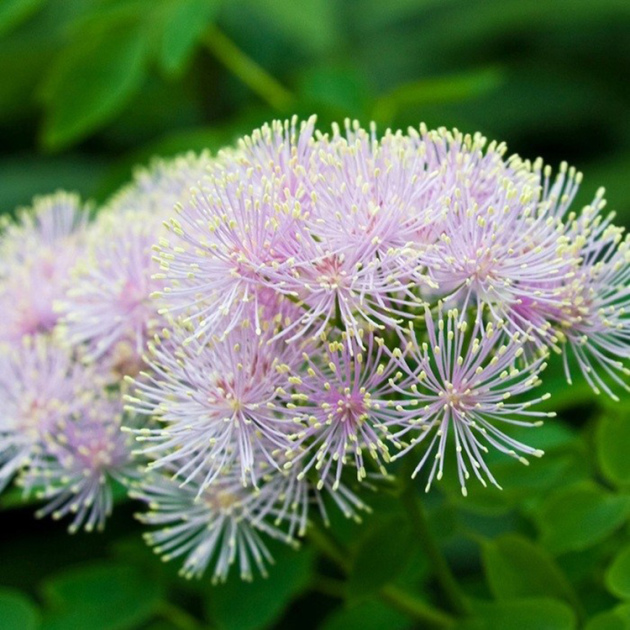
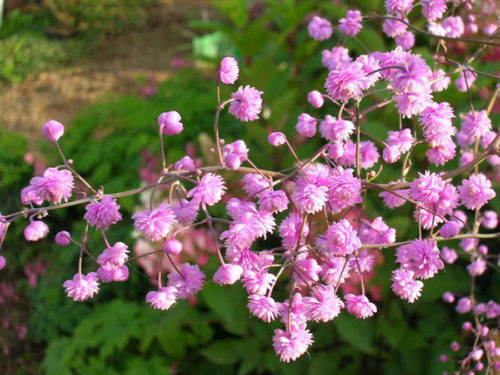
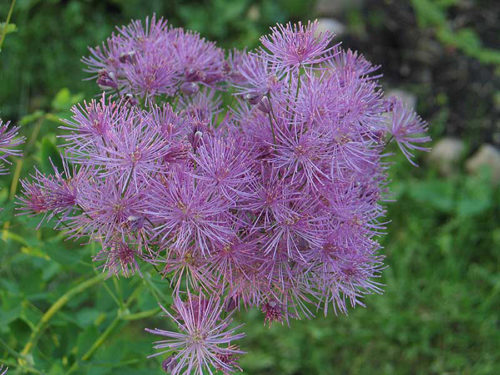
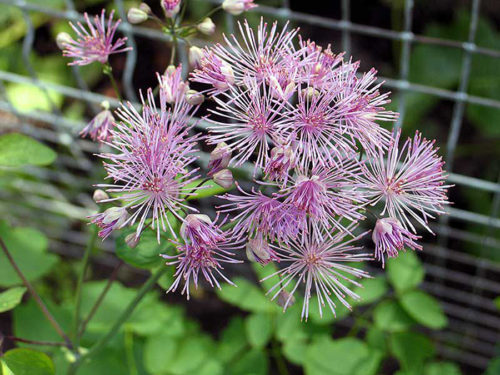
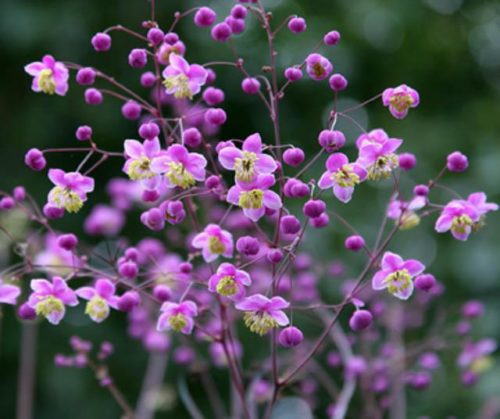
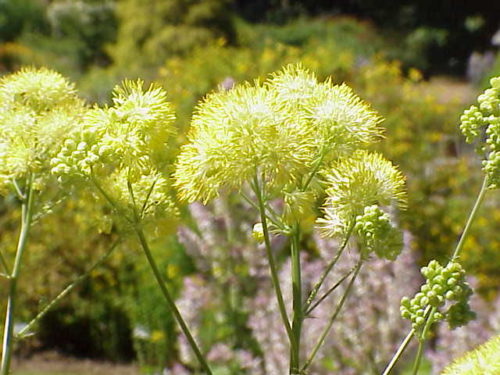
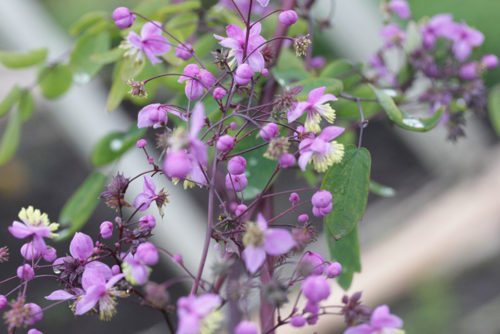
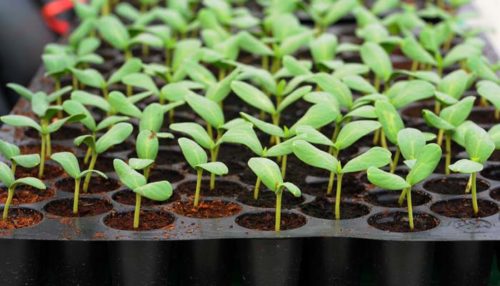
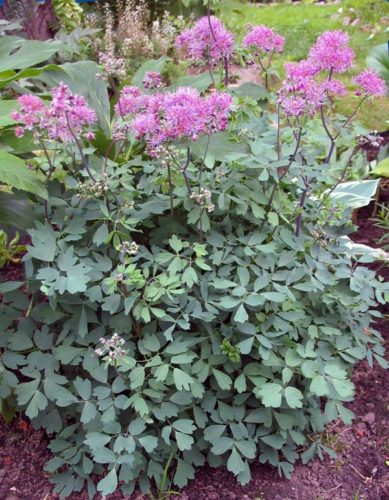
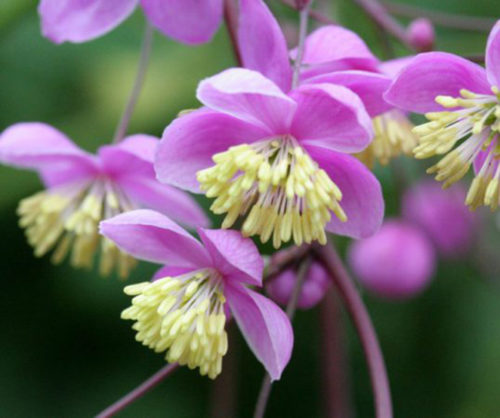
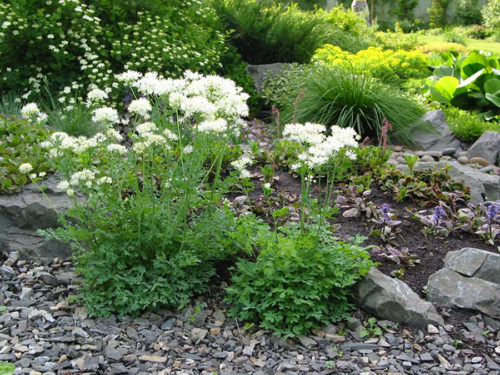
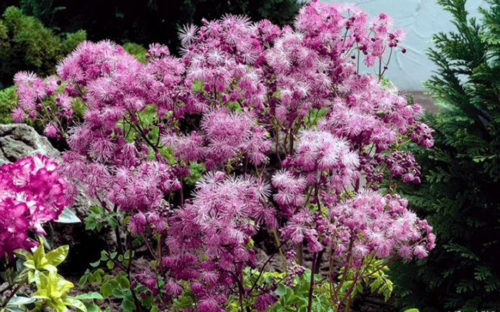
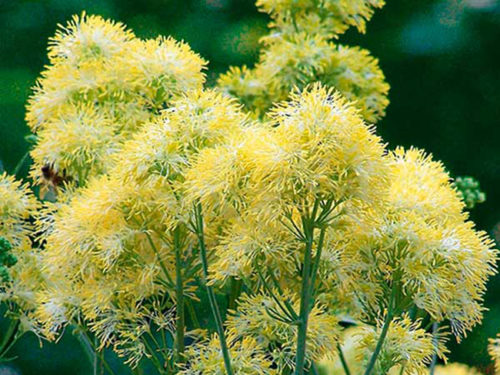
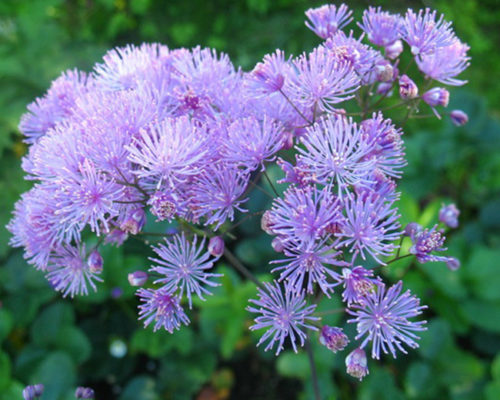
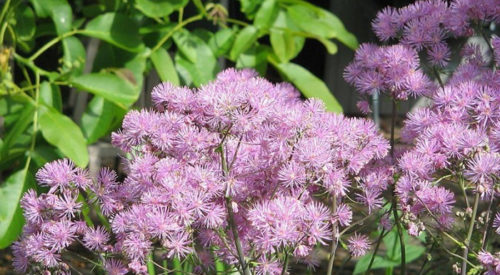












 Start a discussion ...
Start a discussion ...